We may receive a commission when you use our affiliate links. However, this does not impact our recommendations.
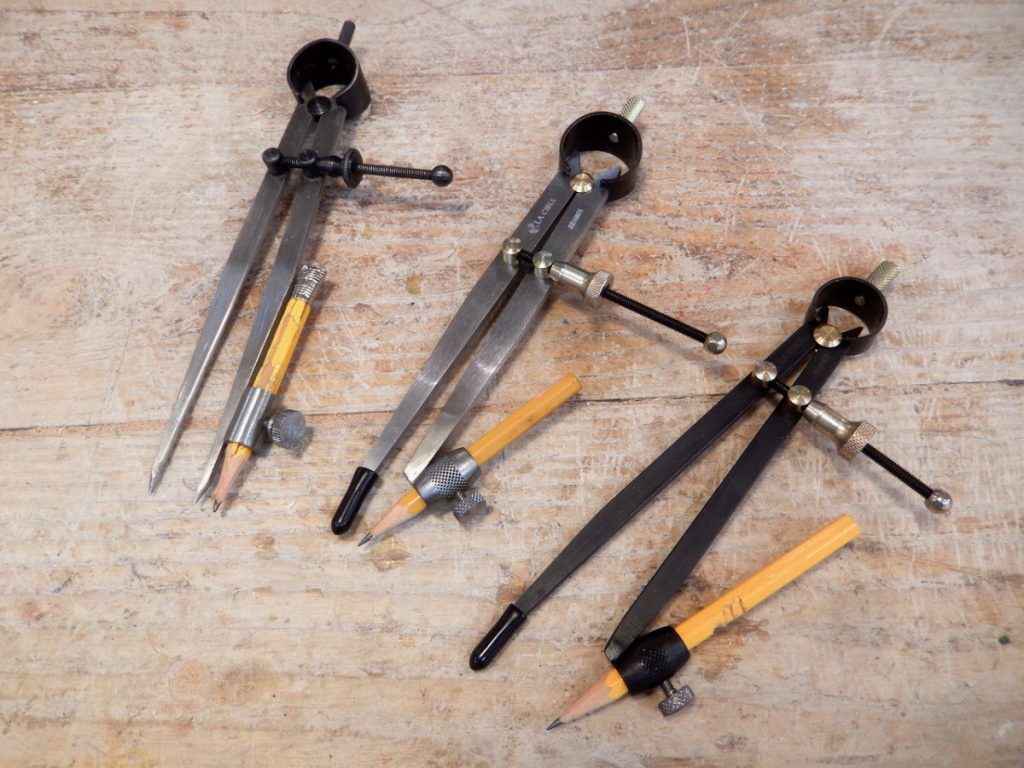
Some of the compasses that we have in our woodworking program. From left to right: An affordable (India) 6″ dividers/compass, Ledin’s (France) 6″ compass in polished steel, Ledin 6″ compass in gun blue.
I have been using compasses throughout my career as a woodworker and a woodworking teacher, and my favorite ones are the pencil compasses. Honestly, I never liked compasses that require a 2mm lead to be fed into them- the lead often breaks off, it’s uncomfortable to handle and sharpen, plus drafting compasses were never meant for the tough and demanding environment of the shop.
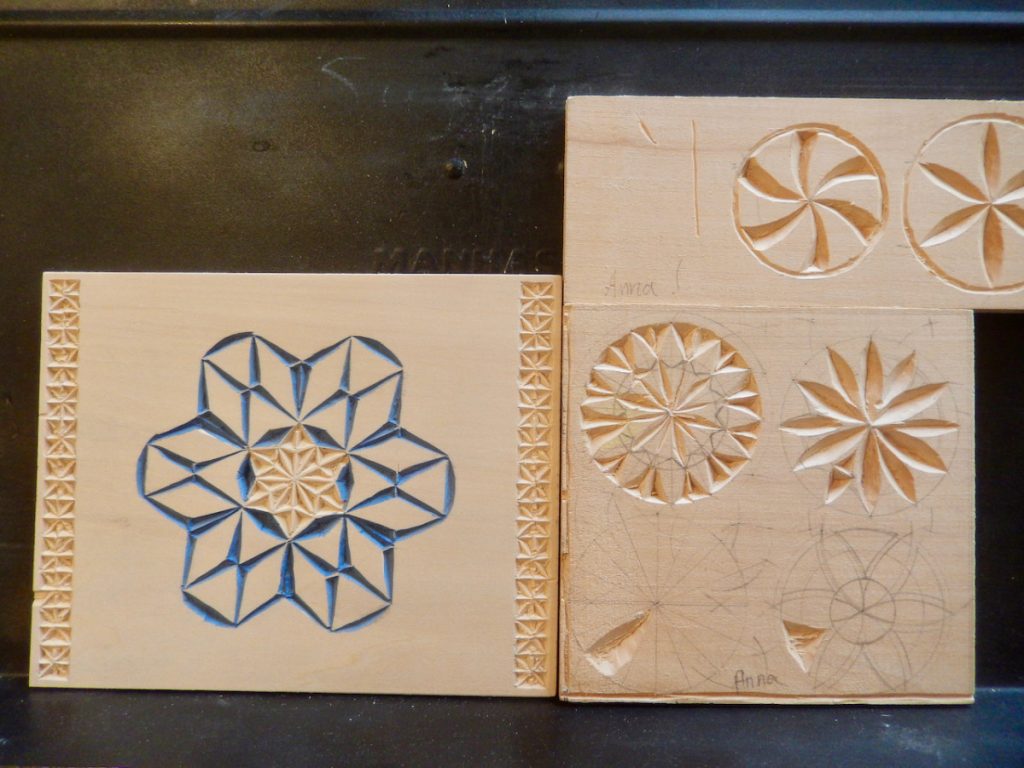
Anna, one of our 10th-grade students used a compass to layout her design during our chip-carving class.
At school, we use compasses quite often. This trimester we changed our curriculum to teach in the classrooms instead of the woodshop. Following the new Covid reality I introduced chip carving to the 10th-grade class, a woodworking activity that can happen successfully in the classroom on the individual desks or on the students’ laps. Compasses have thus become as critical for us as the chip carving knives. Most of our students have brought their own compasses to my class – compasses that they bought and use during geometry classes. But knowing how flimsy these cheaply made and overly priced tools were, I decided to get prepared and ordered some higher quality pencil compasses.
Mainly there are two kinds of pencil campuses: Spring-tensioned and screw operated, and hinge and looking arc (quadrant wing) compasses. The former is lighter, faster to operate, easier to work with, and allows for a very accurate radius setup via the turn of the adjustment nut. The latter is a more robust tool that will not bend or twist as you operate it, but lacks the fine-tuned adjustment mechanism that the threaded rod & nut of the lighter compass.
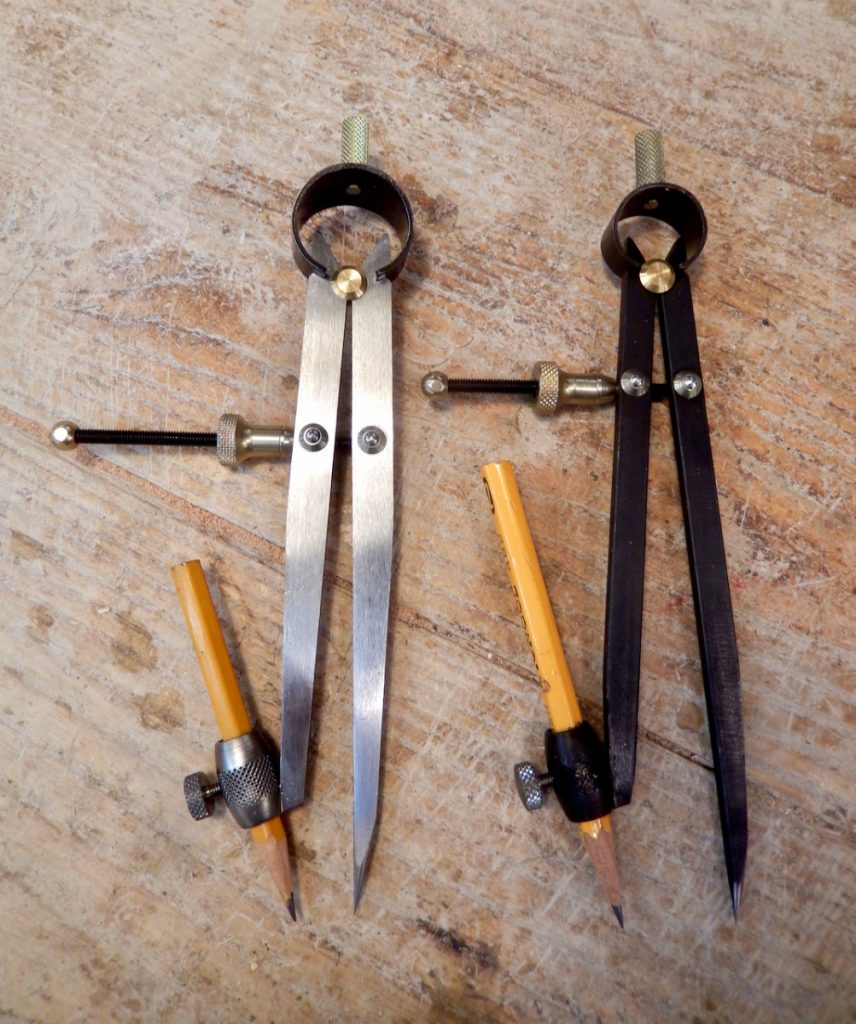
Ledin’s 6″ Pencil compasses. Notice the 300 degrees spring that tensions the legs together over the brass pivot barrel.
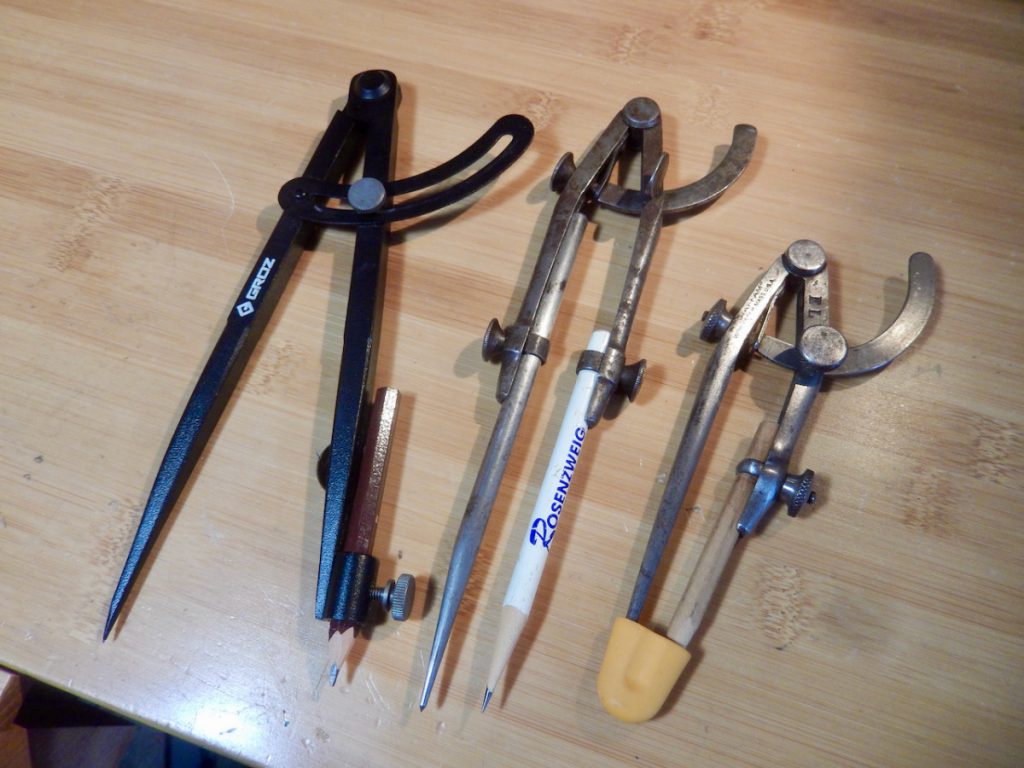
Three Wing compasses. The Groz (black) is a good quality tool that is sold on Amazon. I purchased the two vintage wing dividers/compasses on right on ebay and restored them.
I have both kinds of compasses in my collection and find a good use for them in my work. But if you are planning on owning only one compass which will give you good results for both drawing and layout work I would gravitate towards the spring and screw one.
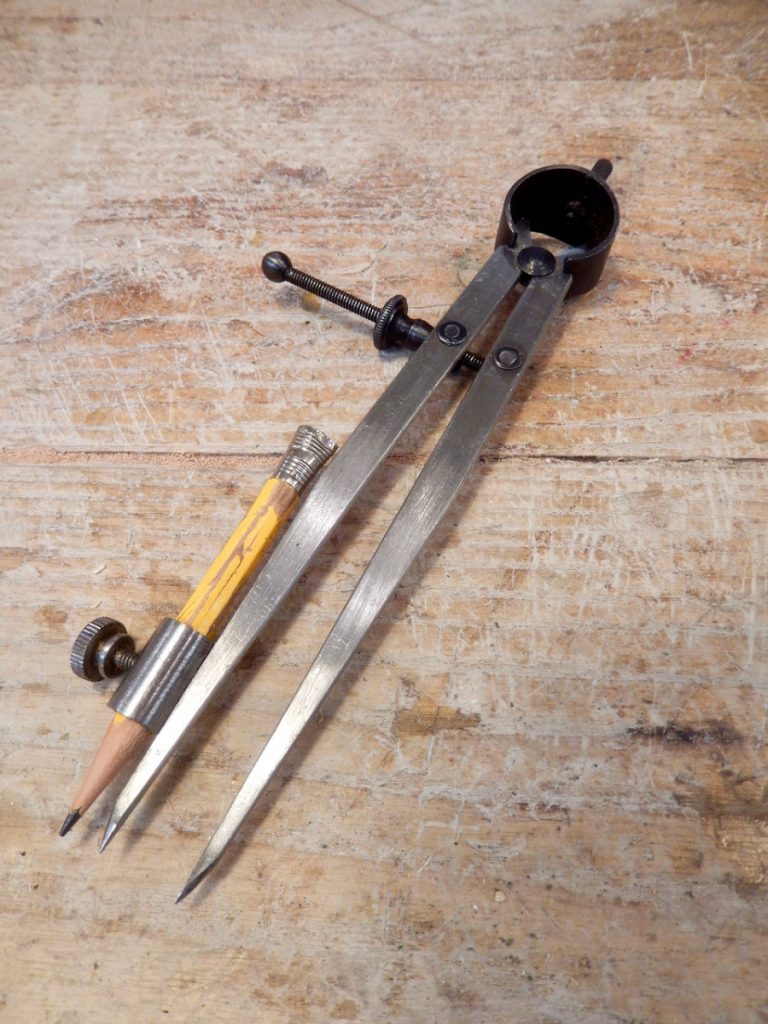
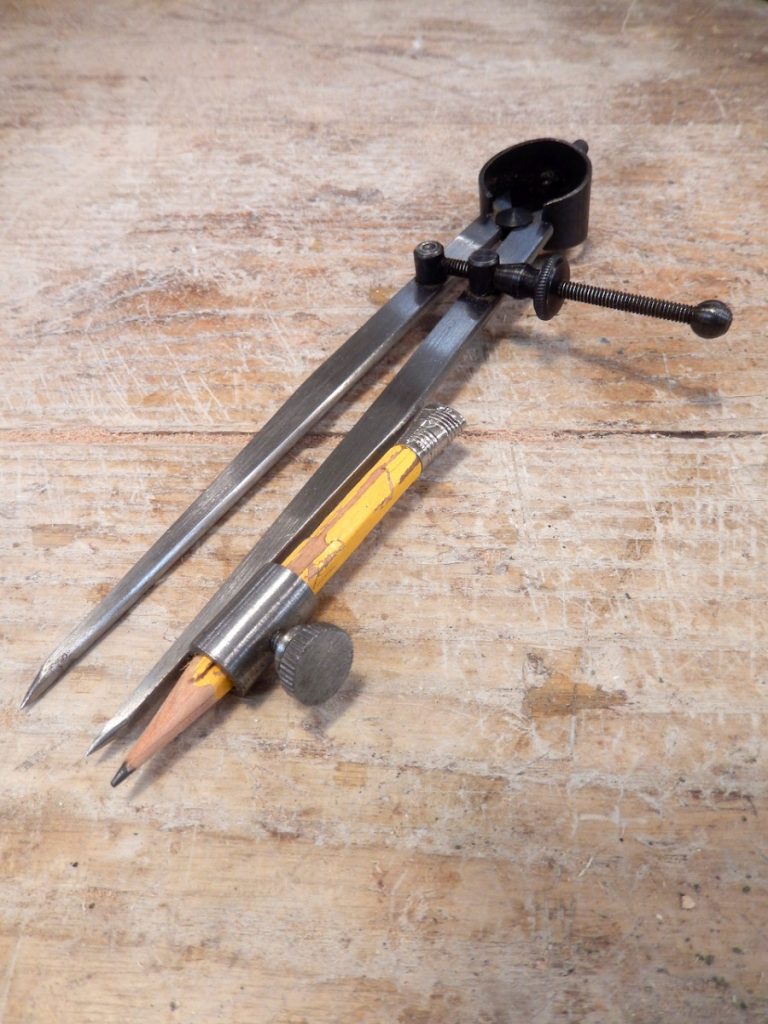
An all-steel construction, dependable, and affordable dividers/compass that cost around $10 on Amazon.
There are plenty of spring and screw compasses out there. One of my first purchases, a compass that we still use in our classes today, was bought on Amazon and was made in India. It is a good and inexpensive tool sold by countless companies and potentially made by a few makers. The cost is reasonable, at around $10 (such as this product). All of these compasses are actually spring dividers with a steel cylinder welded or riveted to one of their legs to hold the pencil in. On its face, this looks like an advantage, as you can use the compass to score crisp arches or measure and repeat dimensions on wood and metal. But this versatility factor comes with a price as the compass’ minimum radius is impeded by the width of one of the dividers’ legs.
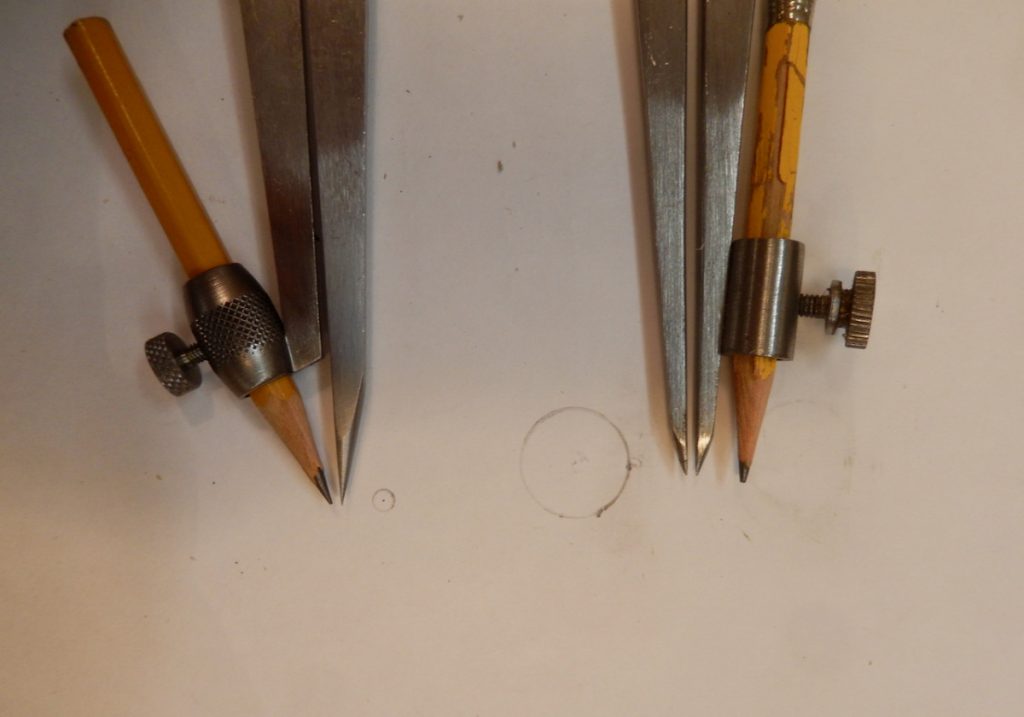
The French Ledin – a true pencil compass, can produce a very small circle due to the fact that its pencil holding sleeve is angels inward. The less expensive dividers-compass can not produce a tight radius as one of the legs of the dividers is limiting the tip of the pencil from closing in fully.
In my searches for the perfect compass, I tried the Lee Valley catalog where years ago I bought a spring and screw compass that I still use today. This compass is great (although it has had a small technical glitch which I took care of) but unfortunately Lee Valley doesn’t carry it anymore. Instead, the company caries two kinds of wing compasses that look good (Check them out here and here) but are on the expensive side. So I kept combing the web and finally found a good tool. At around $20 the Aime Ladin LA CIBLE line of compasses has all that I was looking for: a strong mechanism, an inward-pointing pencil holder sleave, plus one more feature that I like – a quick adjustment nut that allows you to rapidly open or close the legs splay to increase or reduce the radius, and then engage the threaded rod for fine-tuning.
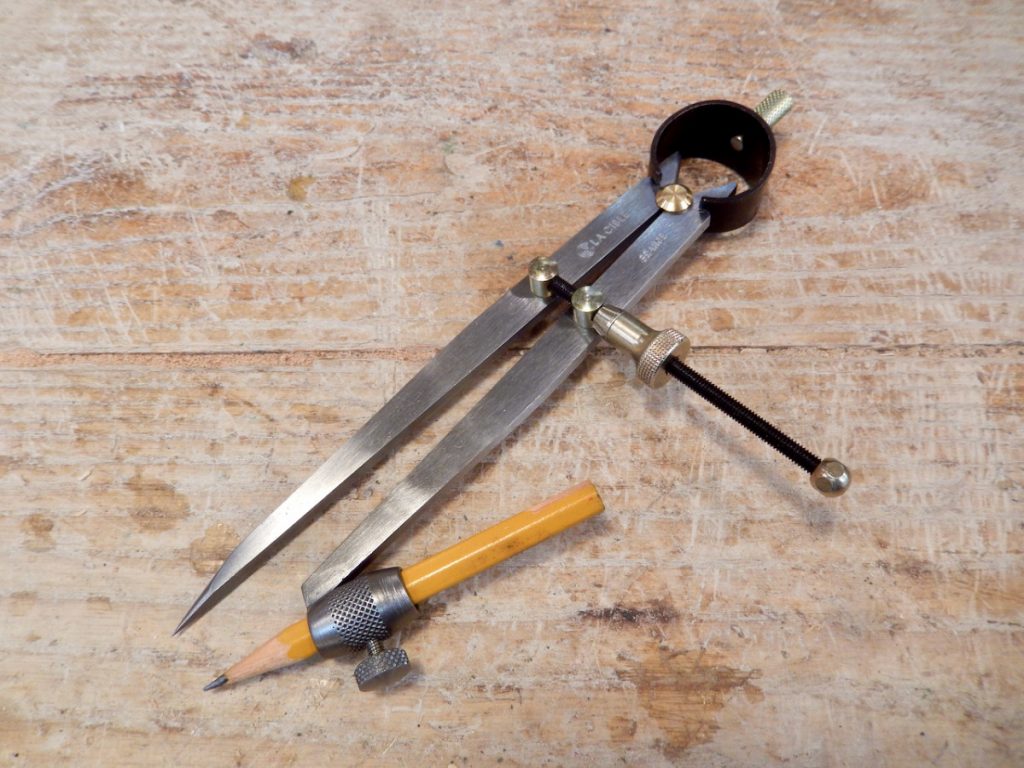
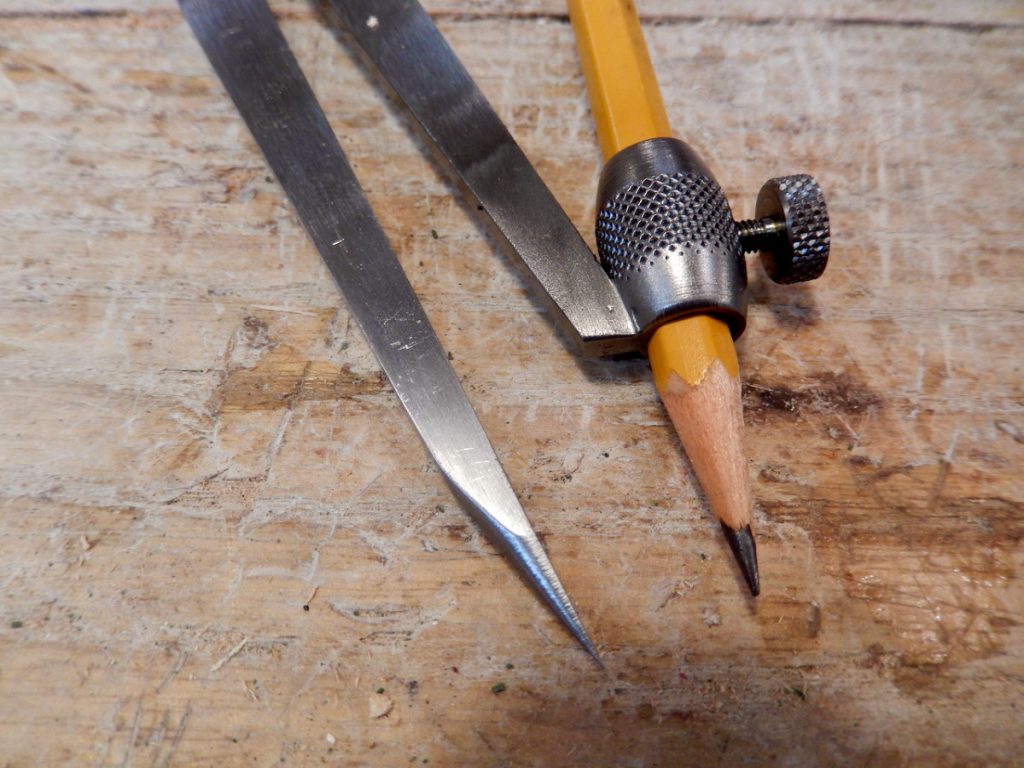
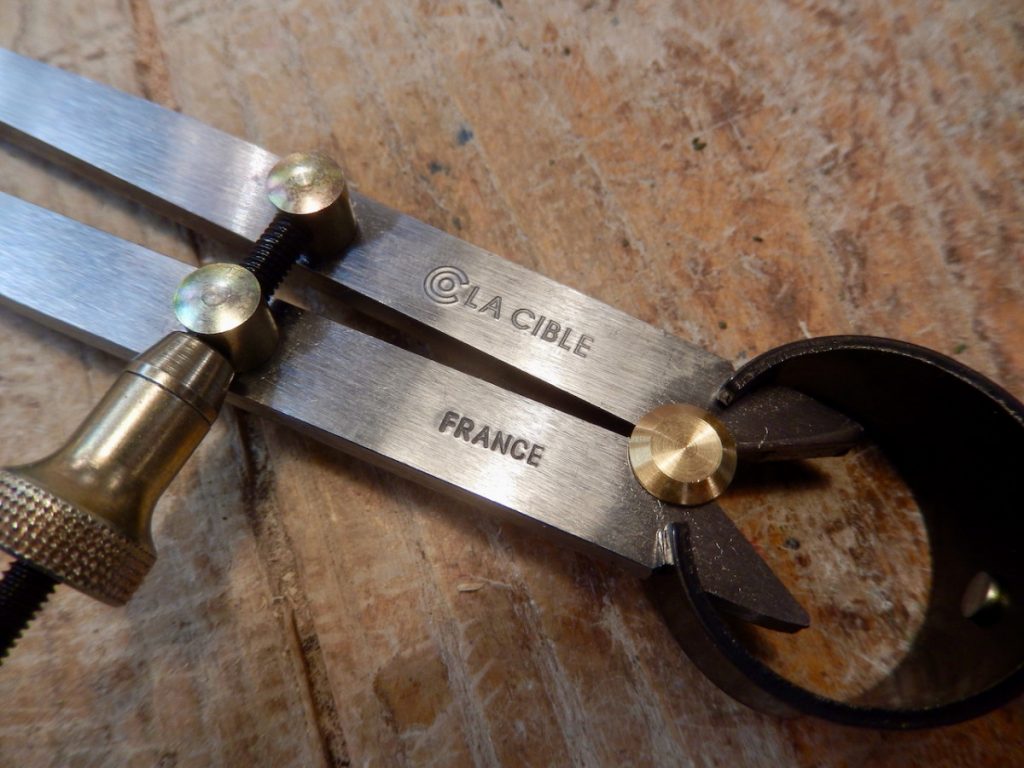
Ledin’s 6″ Compass in polished steel.
We bought a few of the 6” compasses on Amazon and in the next few pictures you can see the comparison between them and the less expensive one that we have.
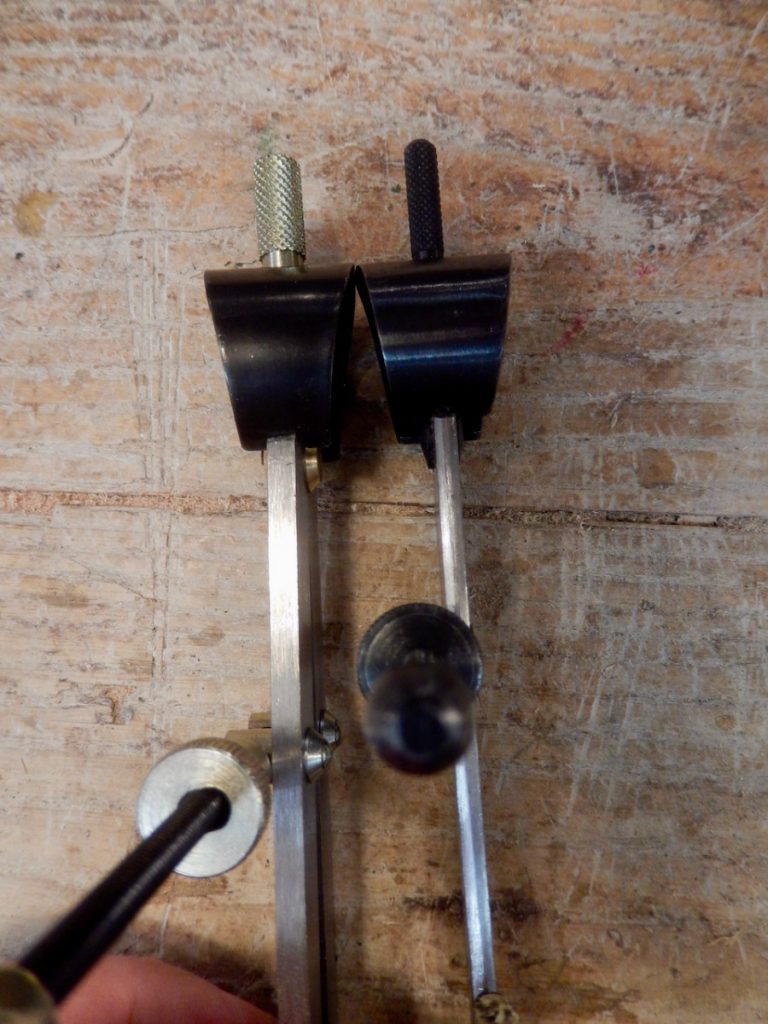
Ledin’s legs (left) are thicker so they increase the rigidity of the compass.
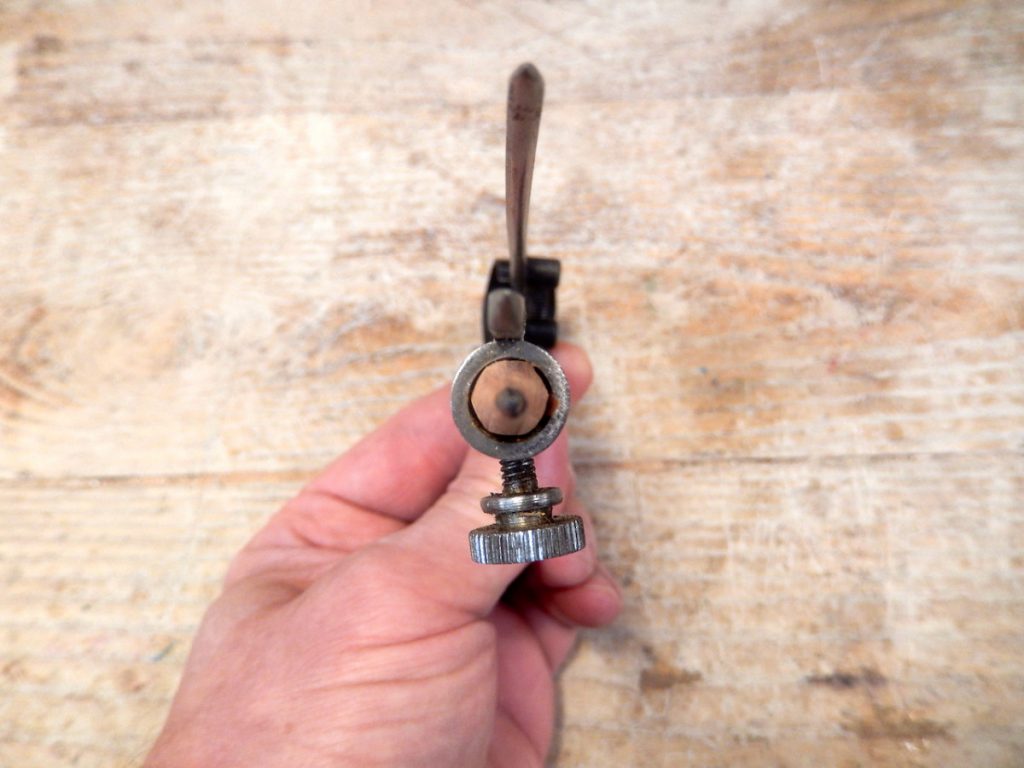
Ledin’s pencil holding sleeve is welded alongside the leg, wherein the less expensive compass has the sleeve welded off the centerline.
Ledin also makes a line of wing (or quadrant) compasses for anyone who is interested in obtaining that design. The wing compasses excel in charting wide radiuses as the combination of a robust hinge plus hefty legs prevent any slack or deformation from developing. And speaking about high-end wing compasses, I suspect that the body Lee Valley compasses are made by Ledin and then are completed up in Canada.
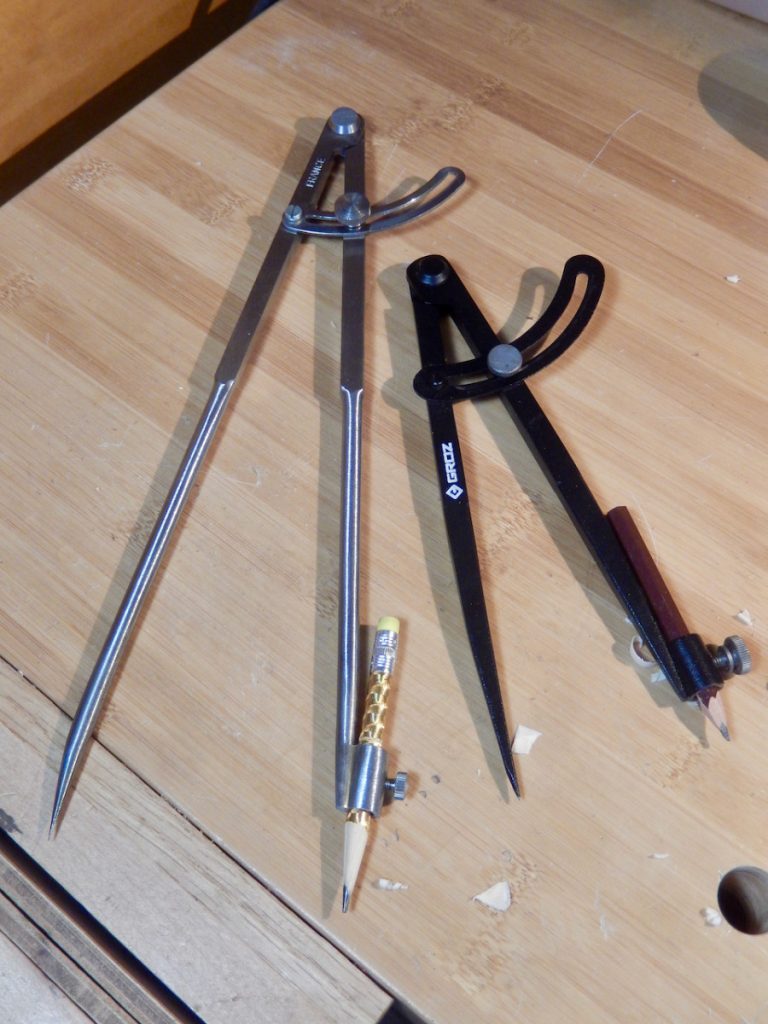
A French made (probably by Ledin) large wing compass bought on Lee Valley, is a formidable tool that will excel when drawing large radiuses. The Gorz on the right is a cheeper, yet still a great tool. Notice the wing compass’ hinges in the following pictures.


Some additional links:
Ledin Compass line on Taylar Toolworks
Groz 6” Wing compass ($16)
And if you have the time and the motivation, here is a video that will walk you through the process of making your own compass dividers:
Here are some supplies and tools we find essential in our everyday work around the shop. We may receive a commission from sales referred by our links; however, we have carefully selected these products for their usefulness and quality.








